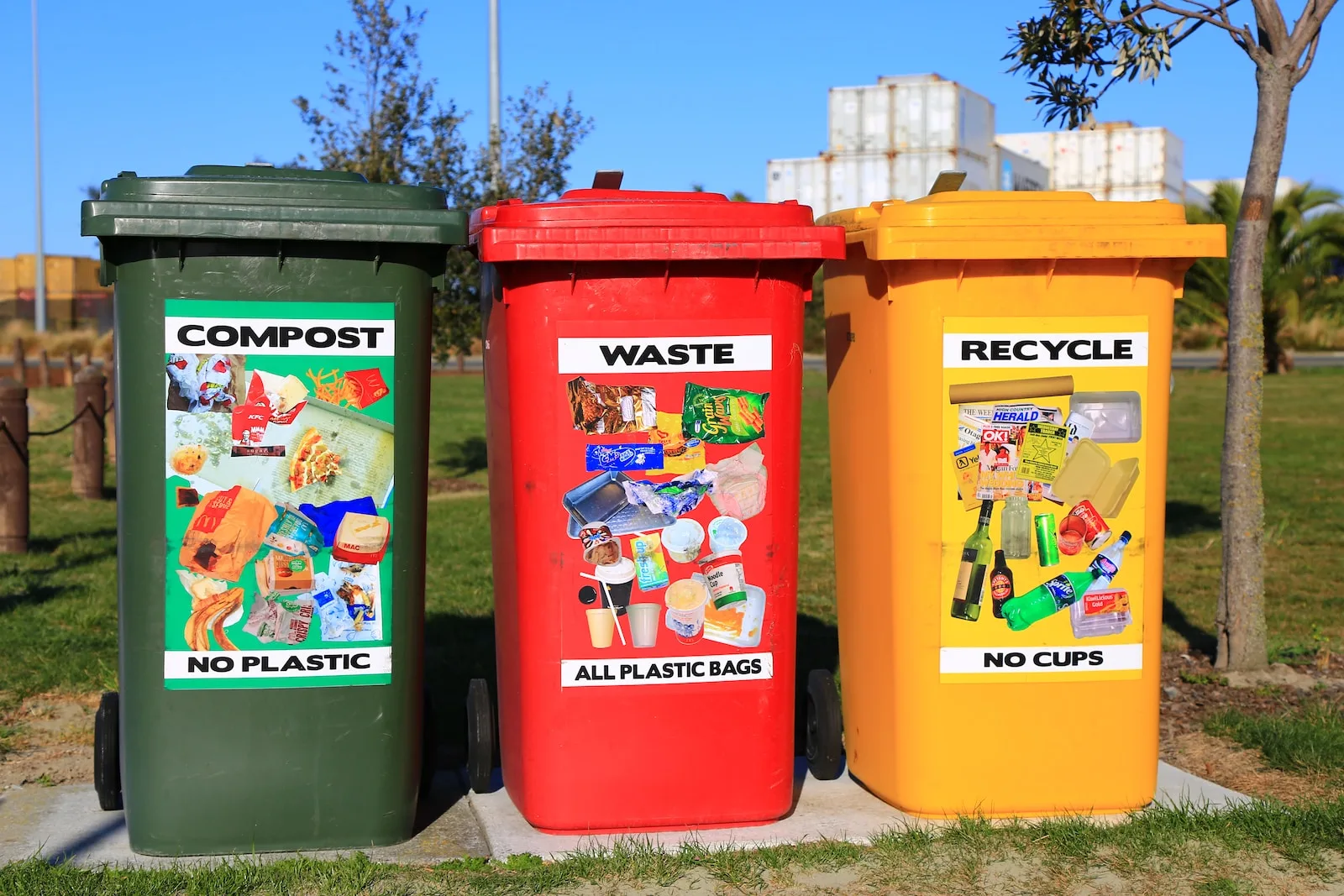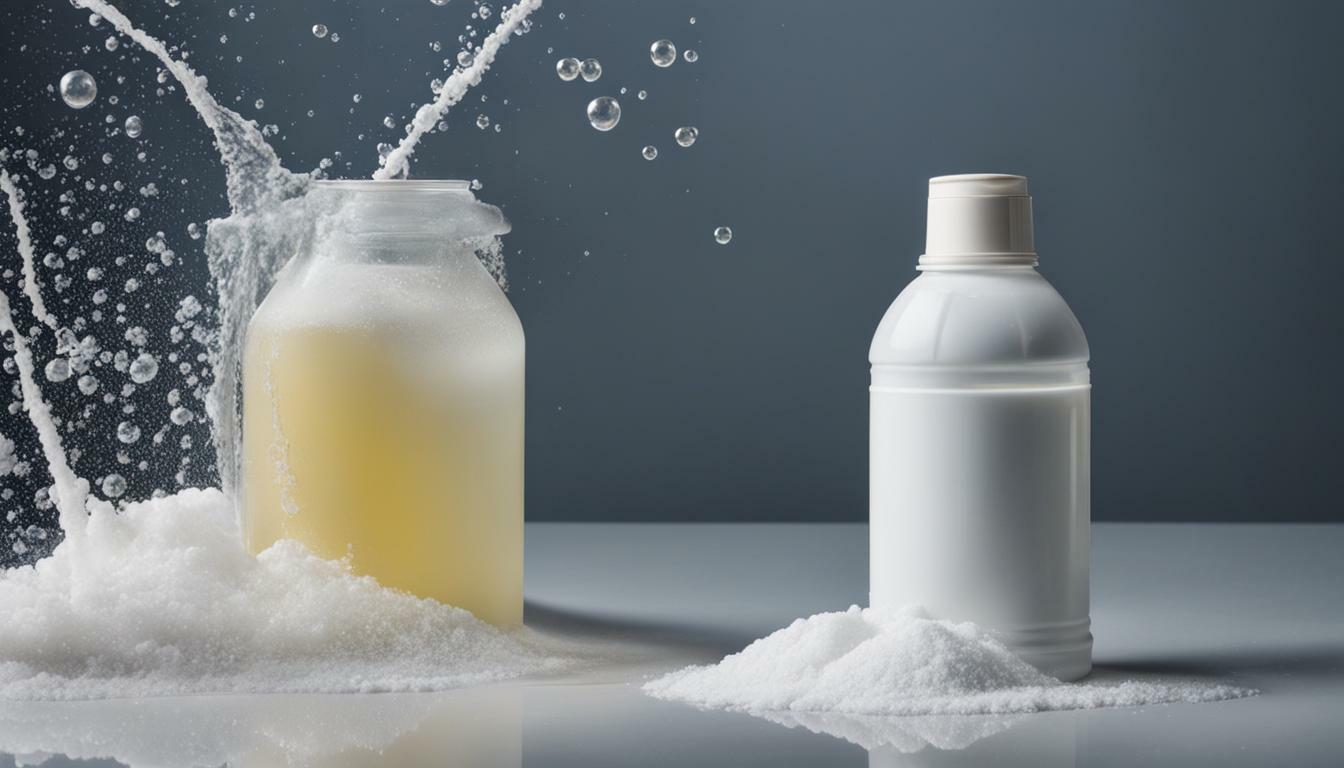Introduction
Waste management has become an increasingly pressing issue in today’s world, as the consumption of goods continues to rise. The accumulation of waste, particularly plastic waste, poses significant threats to our environment and ecosystems. Plastic pollution is a global concern, with devastating impacts on wildlife, marine life, and even human health.
Consequently, it is essential for us to take proactive steps in reducing our plastic footprint. In recent years, there has been a growing interest in biodegradable and compostable alternatives to traditional plastic products.
These alternatives offer promising solutions for minimizing environmental harm caused by plastic waste. One common area where these eco-friendly alternatives have gained traction is in the production of trash bags.
The Importance of Waste Management and Reducing Plastic Pollution
To fully appreciate the significance of biodegradable and compostable trash bags, we must first understand the gravity of the waste management crisis we are facing. Rapid population growth coupled with modern consumerist lifestyles has resulted in an exponential increase in waste generation globally. Insufficient waste management infrastructure often leads to improper disposal practices such as landfilling or incineration.
One of the most alarming consequences of improper waste management is plastic pollution. Plastics are notorious for their durability; they can persist in the environment for hundreds or even thousands of years before breaking down naturally.
As a result, our oceans and landfills have become inundated with plastic waste that poses severe threats to wildlife and ecosystems. Recognizing this urgent need for change, individuals and organizations alike have started emphasizing responsible waste management practices that prioritize recycling efforts and reduce reliance on conventional plastics.
Introduction to the Concept of Biodegradable and Compostable Trash Bags
In light of these environmental concerns, biodegradable and compostable trash bags have emerged as promising alternatives to aid in waste reduction efforts. Biodegradable materials, as the name suggests, have the inherent ability to break down naturally under specific conditions. This decomposition process occurs as a result of microorganisms breaking down the material into simpler substances, ultimately returning it back to nature.
Compostable materials, on the other hand, take this concept further by offering a means to convert organic waste into nutrient-rich compost through controlled composting processes. Compostable trash bags are designed to undergo degradation alongside other organic matter in industrial or home composting facilities, resulting in a valuable end product that can be used as soil conditioner.
By introducing biodegradable and compostable trash bags into our daily lives, we have an opportunity to significantly reduce our plastic waste footprint and move towards more sustainable waste management practices. In the following sections, we will delve deeper into the characteristics of these alternative options and explore their differences in detail.
Understanding Biodegradable Trash Bags
Definition and Characteristics of Biodegradable Materials
Biodegradable materials refer to substances that can naturally break down into simpler components through biological processes over time. These materials are typically derived from organic sources such as plant matter or animal byproducts.
The key characteristic of biodegradable trash bags lies in their ability to degrade into smaller molecules, such as carbon dioxide, water, and biomass, through the action of microorganisms present in the environment. Unlike conventional plastic bags that persist for hundreds of years, biodegradable trash bags offer a more environmentally friendly solution by reducing their long-term impact on ecosystems.
Explanation of How Biodegradable Trash Bags Break Down Over Time
The degradation process of biodegradable trash bags involves a series of biological and chemical reactions facilitated by microorganisms present in the surrounding environment. As these microorganisms come into contact with the biodegradable material, they secrete enzymes that break down the material’s complex molecular structure into simpler compounds. This enzymatic activity results in the gradual breakdown of the trash bag’s polymer chains.
Over time, these smaller fragments continue to be broken down further until they reach a point where they can be assimilated by other living organisms or re-enter natural nutrient cycles without causing harm to ecosystems. This decomposition process allows for a significant reduction in waste accumulation while minimizing potential harm caused by plastic pollution.
Discussion on the Role of Microorganisms in the Degradation Process
Microorganisms play a vital role in facilitating the degradation process of biodegradable trash bags. Certain bacteria and fungi possess specialized enzymes known as extracellular enzymes or exoenzymes that are capable of breaking down complex organic compounds found in these bags. These exoenzymes act as catalysts, accelerating the breakdown process by digesting large polymer chains into smaller fragments.
Bacteria, in particular, are highly efficient at decomposing biodegradable materials due to their adaptive metabolic capabilities. They secrete a wide range of enzymes that target specific components of the biodegradable trash bags, breaking them down into simpler compounds that can be utilized as an energy source or assimilated into their cellular structure.
Factors That Influence the Rate of Biodegradation
Several factors influence the rate at which biodegradable trash bags degrade. Temperature and moisture levels play crucial roles in providing optimal conditions for microbial activity.
Warmer temperatures generally result in increased microbial activity, accelerating the degradation process. Likewise, adequate moisture content is necessary for microbial survival and enzyme functionality.
The composition and characteristics of biodegradable materials also impact their rate of degradation. Some materials may naturally degrade more rapidly than others due to their chemical structure or susceptibility to enzymatic action.
Additionally, environmental factors such as oxygen availability and pH levels can influence microbial activity and hence affect the rate of decomposition. Understanding these various factors enables us to gauge the timeframe within which biodegradable trash bags break down and devise strategies for waste management accordingly, contributing to a more sustainable approach towards waste disposal.
Exploring Compostable Trash Bags
Definition and features of compostable materials
Compostable materials, in the context of trash bags, refer to those that can break down into natural elements within a composting environment. These materials are typically derived from renewable resources, such as plants or biopolymers, and undergo a thorough certification process to ensure their compostability. Unlike biodegradable materials that can break down in various environments, compostable materials require specific conditions found in industrial or home composting facilities for proper decomposition.
Compostable trash bags are designed to facilitate the breakdown process by providing an optimal environment for microorganisms to thrive during composting. These bags are usually made from plant-based polymers like polylactic acid (PLA) or starch-based derivatives.
The choice of material is crucial as it determines the bag’s ability to decompose quickly without leaving any harmful residues behind. Additionally, some compostable trash bags may incorporate additional features like breathable films or moisture control mechanisms to enhance their performance within a composting system.
Detailed explanation of how compostable trash bags decompose in a composting environment
In a well-managed industrial or home composting facility, where proper temperature, moisture levels, and oxygen supply are maintained, the decomposition process of a compostable trash bag begins upon its introduction into the composter. Initially, aerobic microorganisms present in the environment start breaking down complex organic molecules present in the bag’s material structure.
During this stage of decomposition, enzymes secreted by microorganisms catalyze the degradation process by breaking down polymer chains into smaller fragments through hydrolysis reactions. As these fragments continue to degrade further under microbial action, they become metabolically available for other bacteria and fungi present in the system.
Over time, these microorganisms convert the degraded fragments into simpler compounds like carbon dioxide (CO2), water, and biomass. This process, known as aerobic decomposition, is essential for the complete breakdown of compostable trash bags.
It ultimately results in the transformation of these bags into nutrient-rich soil called humus. To ensure successful decomposition, proper composting conditions are imperative.
Temperature regulation is crucial as it affects microbial activity and determines the speed of degradation. Ideally, temperatures between 120°F (49°C) and 160°F (71°C) are maintained to accelerate microbial activity.
Adequate moisture levels, typically around 40-60%, and proper oxygen supply through regular turning or aeration of the compost pile also play vital roles in facilitating the decomposition process. Optimal conditions enable the microorganisms to efficiently break down compostable trash bags, transforming them into valuable organic matter that can be used to enrich soil health and support plant growth.
Variations in Degradation Processes
Biodegradable bags break down through natural processes over time. Biodegradable trash bags are designed to break down naturally over a period of time, typically through the action of microorganisms. These microorganisms, such as bacteria and fungi, consume the organic components of the bag and convert them into simpler compounds. This process usually occurs in environments with sufficient oxygen levels, allowing aerobic degradation to take place.
However, it is important to note that the rate at which biodegradable bags decompose can vary depending on various factors such as temperature, moisture levels, and exposure to sunlight. Compostable bags require specific conditions found in industrial or home composting facilities. Unlike biodegradable bags that can decompose in various environments, compostable trash bags require specific conditions typically found in industrial or home composting facilities.
Compostable materials are designed to completely break down into nutrient-rich soil called compost. The decomposition process for compostable bags relies on a combination of heat, moisture, oxygen, and microbes present in a well-managed compost pile.
These conditions facilitate the breakdown of the bag into organic matter without leaving behind any harmful residues. It is important to note that simply disposing of compostable bags in regular landfills may not result in effective decomposition due to insufficient oxygen and proper microbial activity.
Environmental Impact
Biodegradable bags may leave behind microplastics during degradation. While biodegradable trash bags offer an environmentally friendly alternative to conventional plastic bags, it is crucial to consider their potential impact on the environment during degradation. Some biodegradable materials may break down into smaller plastic fragments known as microplastics.
These tiny particles can persist in the environment for extended periods and pose risks to ecosystems and wildlife. To mitigate this issue, it is important to choose biodegradable bags made from materials that do not fragment into microplastics during decomposition.
Compostable bags contribute to organic waste diversion, reducing landfill usage. Compostable trash bags provide a sustainable solution for managing organic waste. By using compostable bags in conjunction with composting facilities, significant amounts of organic waste can be diverted from landfills.
When compostable bags are properly processed in industrial or home composting sites, they break down into nutrient-rich compost that can be used to enhance soil quality and support plant growth. This process not only reduces the volume of waste going into landfills but also contributes to creating a closed-loop system where organic materials are returned to the earth as valuable resources.
Niche Subtopics: Unveiling Lesser-known Details
Discussion on Certifications for Biodegradability (e.g., ASTM D6400)
When it comes to biodegradable trash bags, it is essential to understand that not all products claiming to be biodegradable are created equal. To ensure credibility and environmental responsibility, many manufacturers seek certifications from organizations like the American Society for Testing and Materials (ASTM). One of the most widely recognized certifications in the industry is ASTM D6400.
This certification guarantees that the product meets specific standards for biodegradability and compostability. ASTM D6400 evaluates various criteria, including the timeframe within which a material or product must break down into carbon dioxide, water, and biomass.
It also considers factors such as toxic residue levels after degradation and how well the product disintegrates during biological decomposition. By adhering to these rigorous standards, certified biodegradable trash bags provide consumers with confidence in their efficacy while minimizing environmental harm.
Exploration of Different Types of Compostable Materials (e.g., PLA-based vs Starch-based)
Within the realm of compostable trash bags, there are different materials available that contribute towards sustainable waste management. Two prominent types are Polylactic Acid (PLA)-based bags and starch-based bags. PLA-based compostable bags are derived from renewable resources such as cornstarch or sugarcane.
These materials undergo a manufacturing process where they are transformed into a polymer called polylactic acid. PLA-based bags have gained popularity due to their durability and ability to decompose in industrial composting facilities within a few months.
On the other hand, starch-based compostable bags utilize natural starches like corn or potato starch combined with other organic additives. They possess excellent moisture resistance but may not be as strong as PLA-based alternatives.
These bags typically break down faster in composting environments, releasing nutrients into the soil. Overall, both PLA-based and starch-based compostable trash bags play crucial roles in waste management efforts, offering eco-friendly solutions to reduce plastic pollution while promoting sustainable practices.
Conclusion
Understanding the difference between biodegradable and compostable trash bags is essential for making informed decisions that align with environmental consciousness. Certifications such as ASTM D6400 provide consumers with reassurance regarding the reliability of biodegradable products.
Exploring various types of compostable materials, such as PLA-based and starch-based options, highlights the diversity of eco-friendly alternatives available to tackle waste management challenges. By choosing these environmentally responsible options, we can contribute to reducing plastic pollution and conserving natural resources.
By embracing sustainable practices like using biodegradable or compostable trash bags, we take a significant step towards a cleaner future. Let us embrace these innovative solutions with optimism, knowing that our collective actions can make a positive impact on our planet’s well-being.
 Skip to main content
Skip to main content


